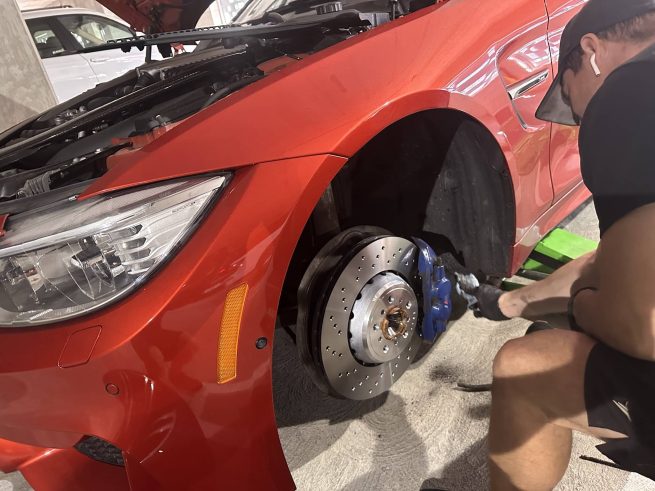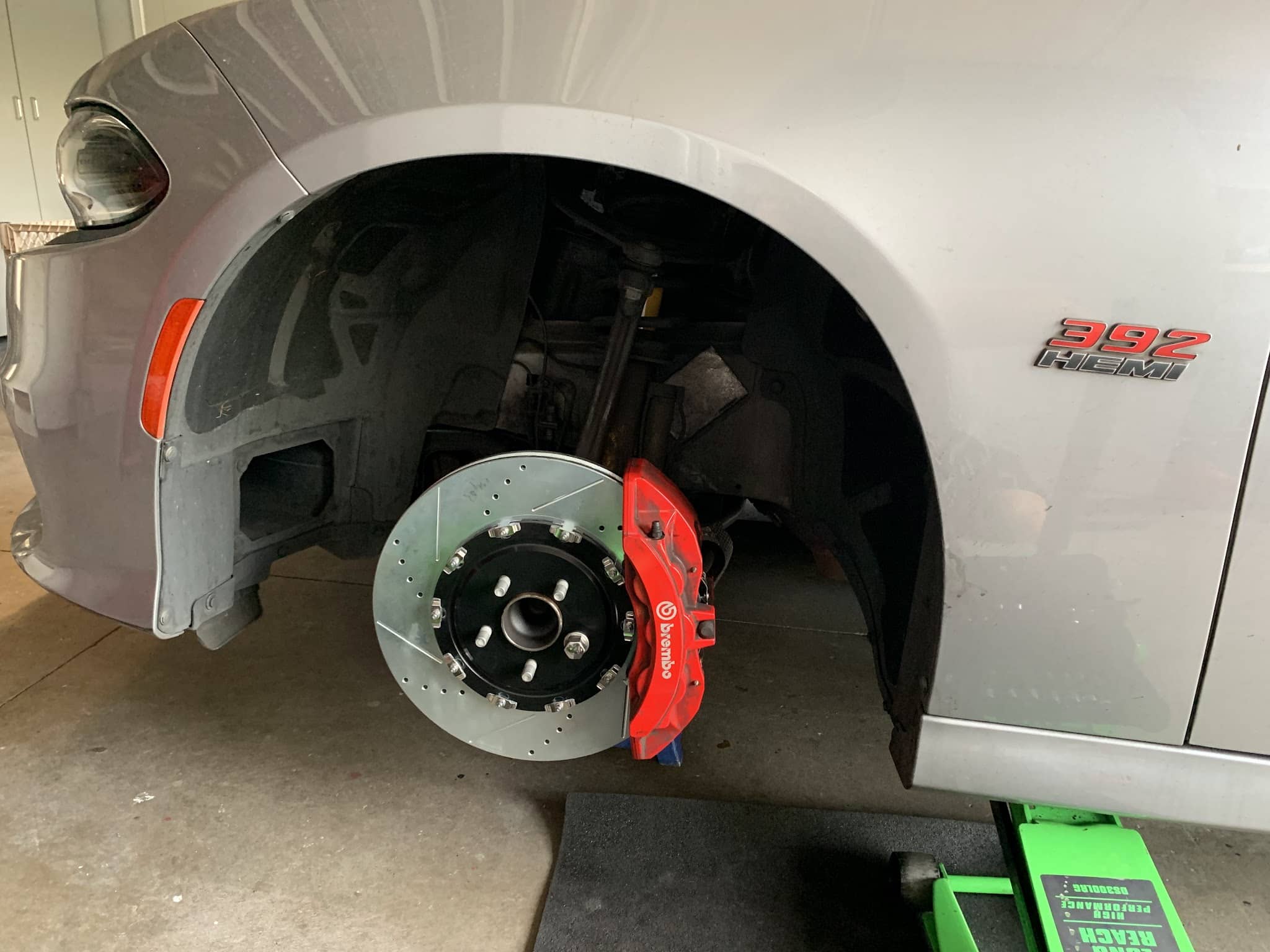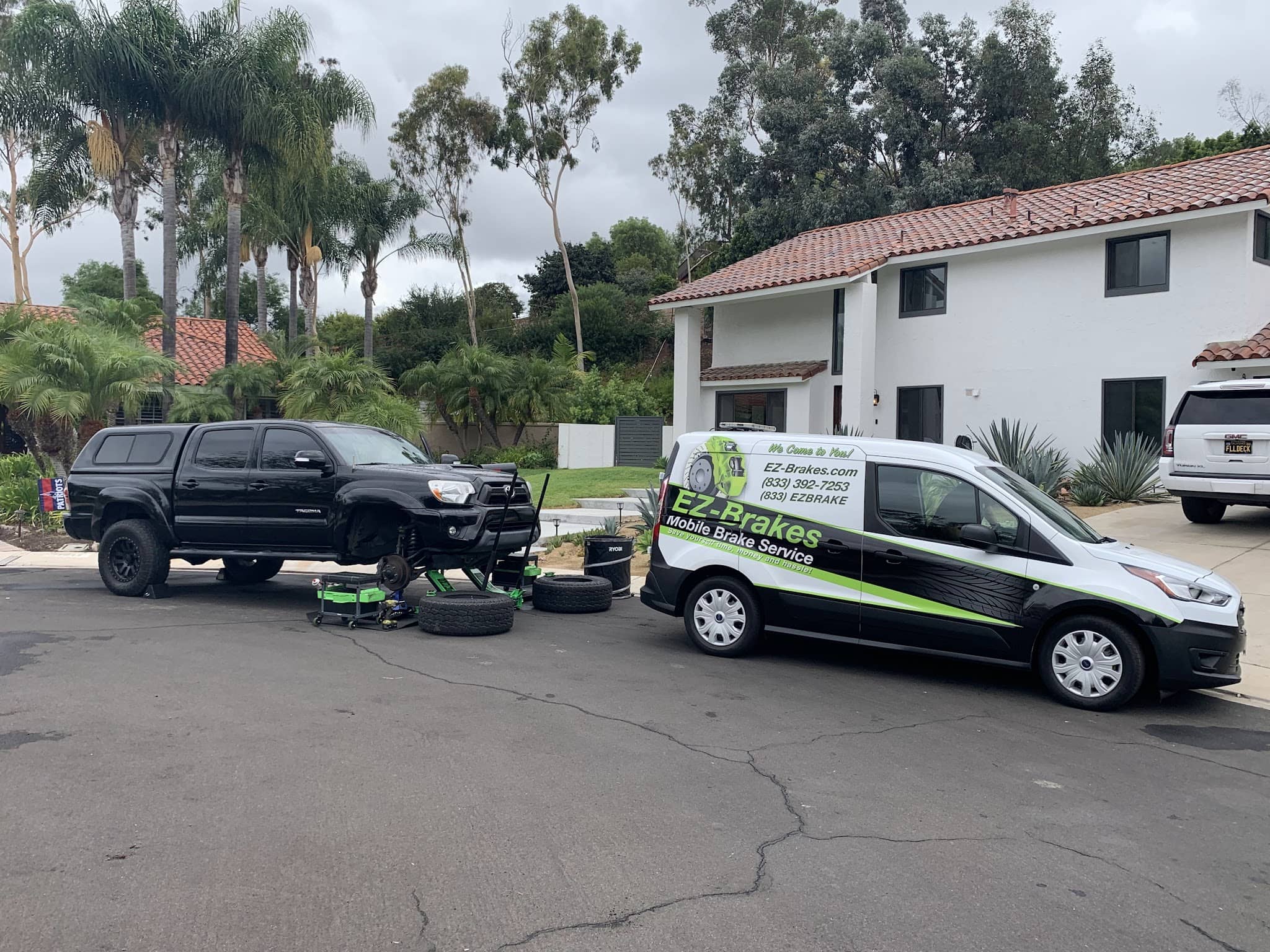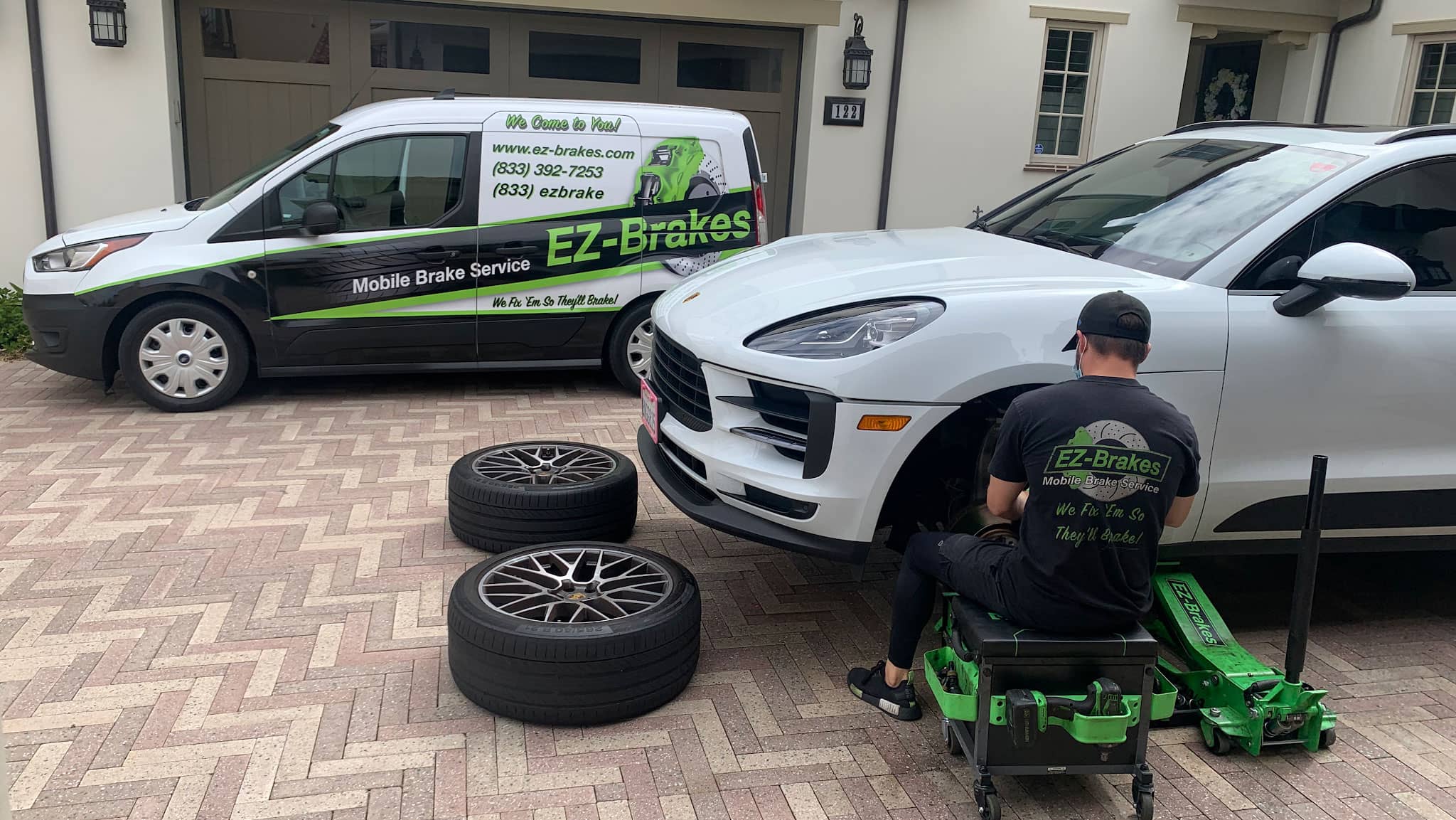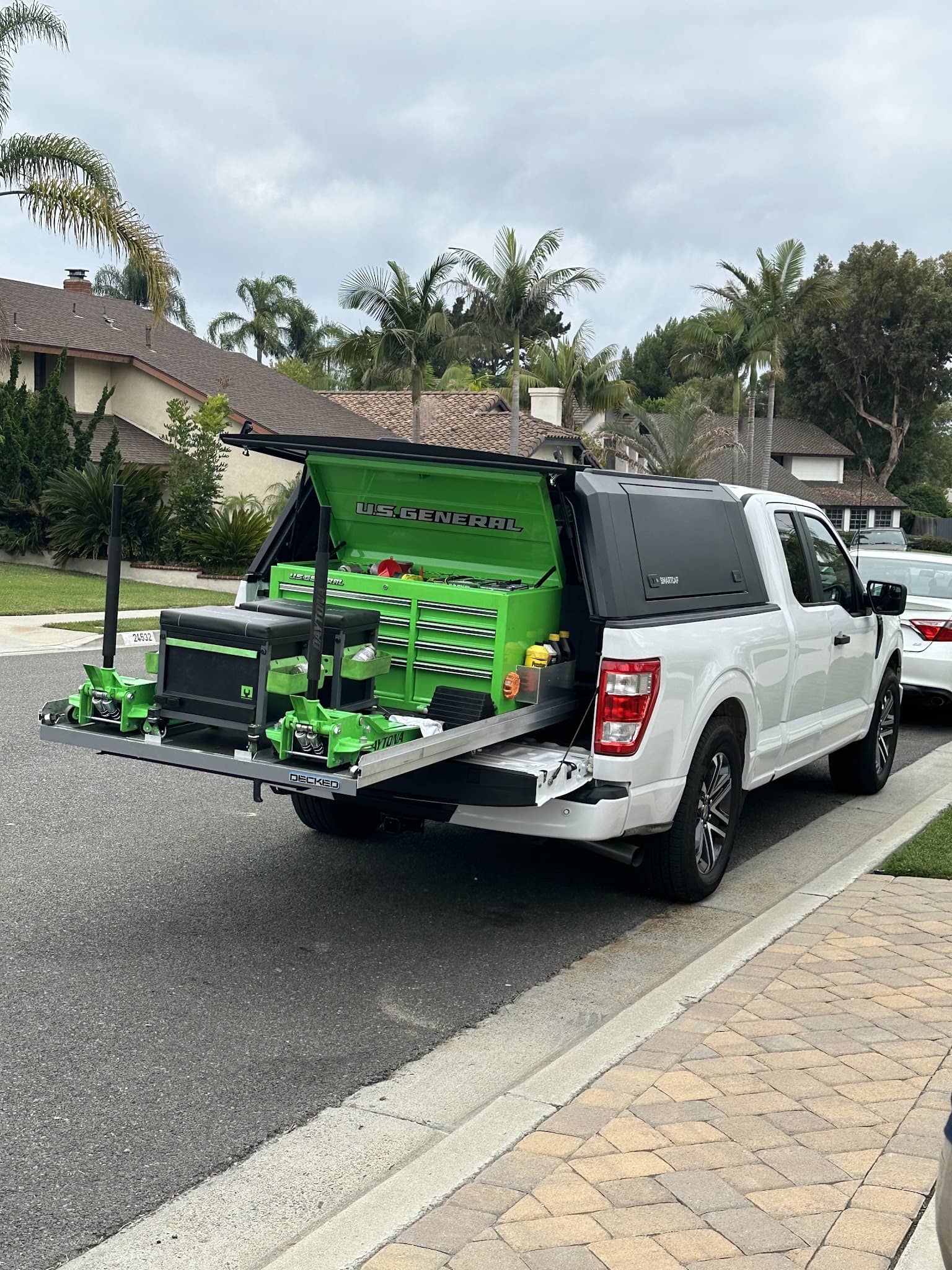Proper brake maintenance is crucial for your vehicle’s safety. One of the most important tasks in brake maintenance is brake bleeding, a process that ensures your vehicle’s braking system works effectively by removing air and replacing old fluid with fresh fluid. In this guide, EZ-Brakes will take you through the step-by-step process of brake bleeding, whether you are bleeding brakes by yourself or seeking professional assistance. We’ll cover everything you need to know, from tools and materials to the different methods of brake bleeding and when to seek help.
What is Brake Bleeding?
Brake bleeding is the process of removing air and old fluid from the brake system, allowing fresh fluid to flow through. Brake fluid is essential to the braking system, as it helps transfer the force you apply to the brake pedal into hydraulic pressure to activate the brakes. Over time, the brake fluid in the brake fluid reservoir can become contaminated with moisture or debris, which can lead to rust in the wheel cylinders, reduced braking efficiency, and even failure of the hydraulic system.
By bleeding brakes, you ensure that only fresh fluid flows through the entire system, improving the performance and safety of your vehicle. It’s especially important for vehicles with drum brakes or those that have been running on old fluid for a long time, as contamination and air in the lines can cause braking issues.
Signs That Your Brakes Need Bleeding
There are several signs that your brakes may need brake bleeding. Here are the most common symptoms:
1. Spongy or Soft Brake Pedal
If you press the brake pedal and it feels soft, squishy, or spongy, this is a strong indicator that air has entered the brake lines. The presence of air can disrupt the hydraulic pressure in the system, making the brakes feel unresponsive. This is especially problematic if the air enters the lines over time, leading to a decrease in braking performance.
2. Unresponsive Brakes
If you notice that your brakes are unresponsive or take longer than usual to bring the vehicle to a stop, it’s a sign that air or old fluid has compromised the brake system’s efficiency. When air is trapped in the brake lines, the hydraulic pressure is weakened, causing the brakes to respond sluggishly.
3. Brake Fluid Leaks or Low Fluid Levels
A low brake fluid reservoir is another warning sign that your braking system might need attention. If your vehicle has spilled brake fluid or leaks, it could mean that air is entering the brake lines. Make sure to check your brake fluid reservoir regularly to ensure it’s at the correct level. If it’s low, it could indicate that you need to brake bleed the system.
4. Contaminated or Dark Brake Fluid
Brake fluid should be clear or slightly amber, but over time, it can become contaminated and turn dark. This happens because brake fluid absorbs moisture, which can lead to rust in the wheel cylinders and cause the fluid to degrade. If your fluid appears dark, it’s time to replace it with new fluid and perform a brake flush.
5. Brake Warning Light
If your vehicle’s brake warning light comes on, it could indicate that the braking system needs maintenance, including brake bleeding. Low fluid levels or air in the brake lines are common reasons for this light to illuminate.
Step-by-Step Guide to Brake Bleeding
If you’ve identified that your vehicle needs brake bleeding, follow these steps to ensure the job is done correctly.
Step 1: Gather Your Tools and Materials
Before you begin brake bleeding, make sure you have the following tools:
• Brake fluid (check your vehicle’s manual for the correct type)
• Brake bleeder kit (which typically includes a hose and a catch container)
• Wrenches (for opening the bleeder screws on the brake calipers)
• Clear tubing (to attach to the bleeder screws)
• Catch container (to collect the old fluid)
• Gloves (brake fluid can be corrosive)
• Car jack and jack stands (to lift the vehicle)
Step 2: Locate the Bleeder Screws
Each brake caliper or drum brake has bleeder screws that allow brake fluid to escape during the brake bleeding process. You can find these screws near the top of the caliper or wheel cylinders. It’s important to know their location before you start working on the brakes.
Step 3: Lift the Vehicle and Remove the Wheels
You’ll need to raise your vehicle with a car jack and secure it on jack stands. After lifting the car, remove the wheels to gain access to the brake calipers or drum brakes. Be sure to use the proper lifting points for your vehicle to avoid accidents.
Step 4: Attach the Brake Bleeder Kit
Once the wheels are removed, attach the clear tubing from your brake bleeder kit to the bleeder screws. Place the other end of the tubing into the catch container to collect the fluid. This allows you to see the old brake fluid exiting the system and ensures you don’t spill brake fluid on your car or the ground.
Step 5: Begin Bleeding Brakes
If you’re bleeding brakes by yourself, you can use a one-person brake bleeder kit or a vacuum pump. To start, have someone pump the brake pedal a few times and hold it down. Open the bleeder screw slightly to allow the old fluid and any trapped air to escape. You’ll notice air bubbles or dark fluid leaving the lines. Once the fluid runs clear, close the bleeder screw.
If you’re using a vacuum pump, it will pull the old fluid and air from the lines automatically, making the process faster and easier. Be sure to start with the wheel farthest from the brake fluid reservoir (typically the passenger side rear wheel) and work your way toward the nearest wheel.
Step 6: Check Fluid Levels and Repeat the Process
During the brake bleeding process, keep an eye on your brake fluid reservoir. If the fluid level drops too low, it could cause air to re-enter the system. Top off the brake fluid reservoir as necessary, and continue bleeding each brake until the fluid is clear and free of air bubbles. This ensures that the entire system is bled properly.
Once the fluid is clear and you’re confident that all air has been removed, you can replace the wheels, lower the vehicle, and test the brake pedal for firmness. If the pedal still feels soft, you may need to repeat the process.
Common Brake Bleeding Methods
There are a few different methods for bleeding brakes, and the method you choose depends on the tools you have available.
Manual Brake Bleeding
Manual brake bleeding requires two people—one to pump the brake pedal and one to open and close the bleeder screws. It’s an effective and simple method but requires coordination between the two people.
Bleeding Brakes with Vacuum Pump
For those bleeding brakes by yourself, using a vacuum pump is an excellent option. The vacuum pump removes the air and fluid quickly, making the process faster and more efficient. This method works especially well for vehicles with drum brakes or older brake systems.
Brake Flushing
Brake flushing is a more extensive procedure that involves replacing old fluid with new fluid throughout the entire system. It’s usually recommended every few years to prevent moisture buildup and rust in the brake lines and wheel cylinders. Brake flushing ensures the entire braking system is free of contaminants and functioning properly.
Why Choose EZ-Brakes for Brake Bleeding?
While bleeding brakes by yourself can be a rewarding task, it’s often best to trust professionals like EZ-Brakes for this critical brake maintenance. Our expert technicians have the tools and knowledge to perform brake bleeding safely and effectively, ensuring your vehicle’s braking system is in peak condition.
At EZ-Brakes, we offer a range of brake services, including brake flushing, brake fluid replacement, and brake system inspections. We use high-quality, fresh fluid to ensure that your brake system works reliably and efficiently. Plus, our team is equipped to deal with everything from rust buildup to issues with wheel cylinders, ensuring that your vehicle’s hydraulic system is in perfect working order.
Frequently Asked Questions About Brake Bleeding
WHAT HAPPENS IF YOU DON’T BLEED YOUR BRAKES PROPERLY?
If brake bleeding isn’t done correctly, air or old fluid may remain in the system. This can lead to reduced braking performance, longer stopping distances, and even brake failure. It’s essential to remove all air from the lines and replace old fluid with fresh fluid to ensure safe braking.
HOW OFTEN SHOULD YOU BLEED YOUR BRAKES?
You should brake bleed your vehicle every two years or whenever you notice issues like a soft pedal or contaminated fluid. If you’re experiencing decreased brake performance or if you’ve replaced brake components like wheel cylinders, it’s time to perform brake bleeding.
CAN I BLEED MY BRAKES BY MYSELF?
Yes, you can bleed brakes by yourself using a vacuum pump or a one-person brake bleeder kit. However, it can be easier and more efficient with a second person to help pump the brake pedal.
WHAT TYPE OF BRAKE FLUID IS REQUIRED FOR BRAKE BLEEDING?
Always use the recommended brake fluid type for your vehicle. Most vehicles require DOT 3, DOT 4, or DOT 5 fluid. Check your owner’s manual for the correct specifications to avoid damaging your vehicle’s hydraulic system.
HOW DO I KNOW IF MY BRAKES ARE FULLY BLED?
You’ll know your brakes are fully bled when the brake pedal feels firm, and the fluid runs clear without any air bubbles. If the pedal still feels soft, repeat the brake bleeding process to ensure the entire system is free of air.
Conclusion
Performing regular brake bleeding is a crucial maintenance task that ensures your vehicle’s braking system is in top condition. Whether you decide to bleed brakes by yourself or trust the experts at EZ-Brakes, it’s important to use fresh fluid and ensure the entire system is free from air and contaminants.
For hassle-free brake bleeding and other brake services, contact EZ-Brakes. Our professional technicians will ensure your braking system operates safely and efficiently, giving you peace of mind on the road.
